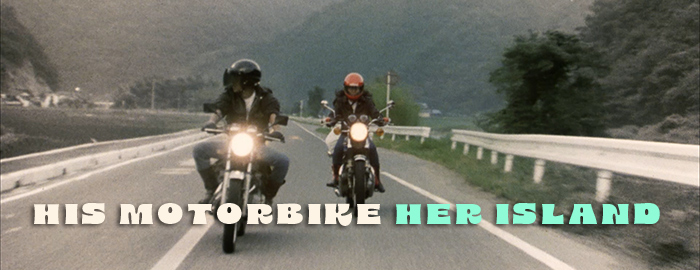
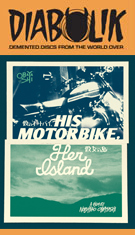

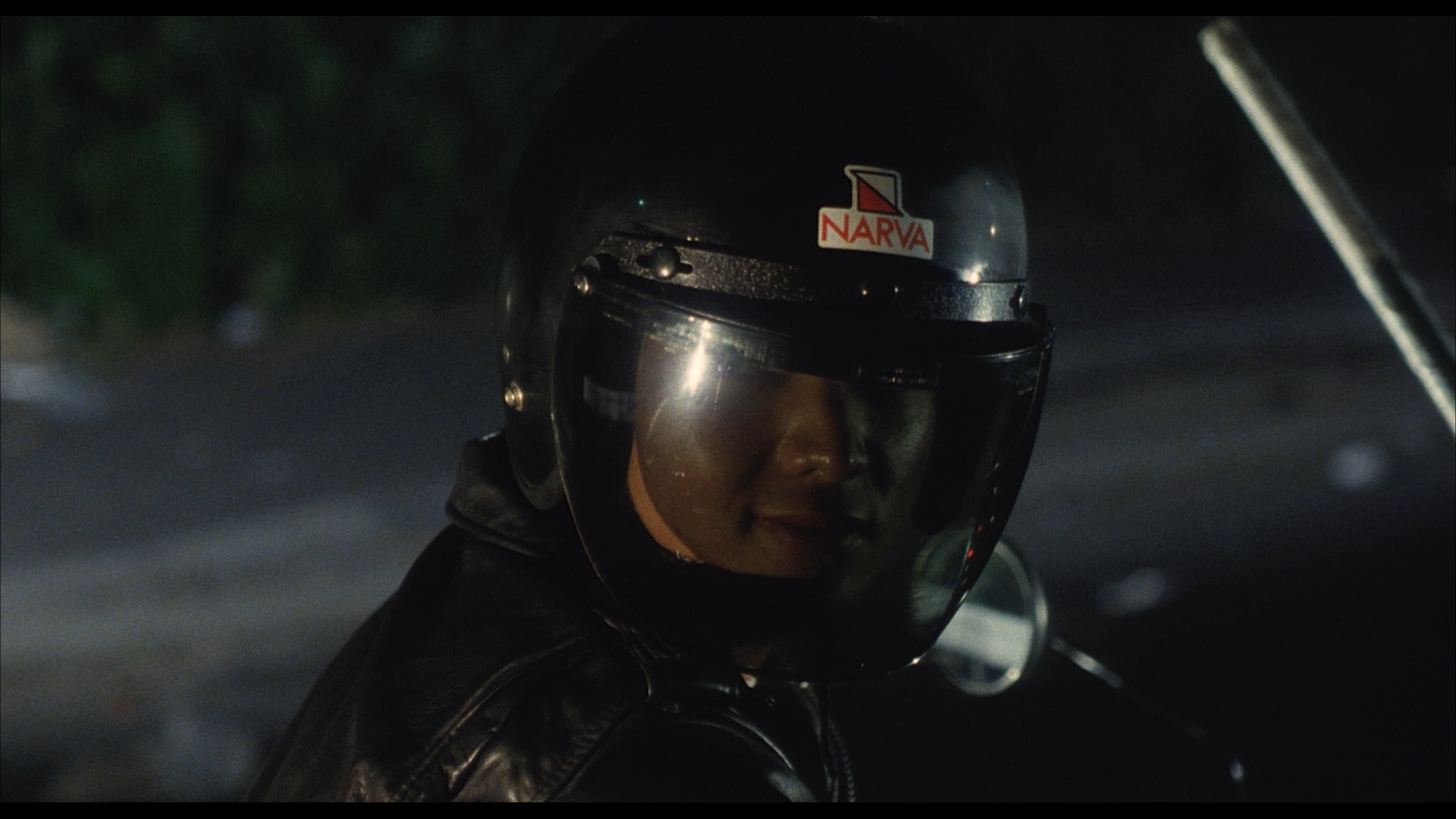 filmmaker Nobuhiko Obayashi is still best known to Western viewers for his caffeinated horror epic House but excelled
filmmaker Nobuhiko Obayashi is still best known to Western viewers for his caffeinated horror epic House but excelled 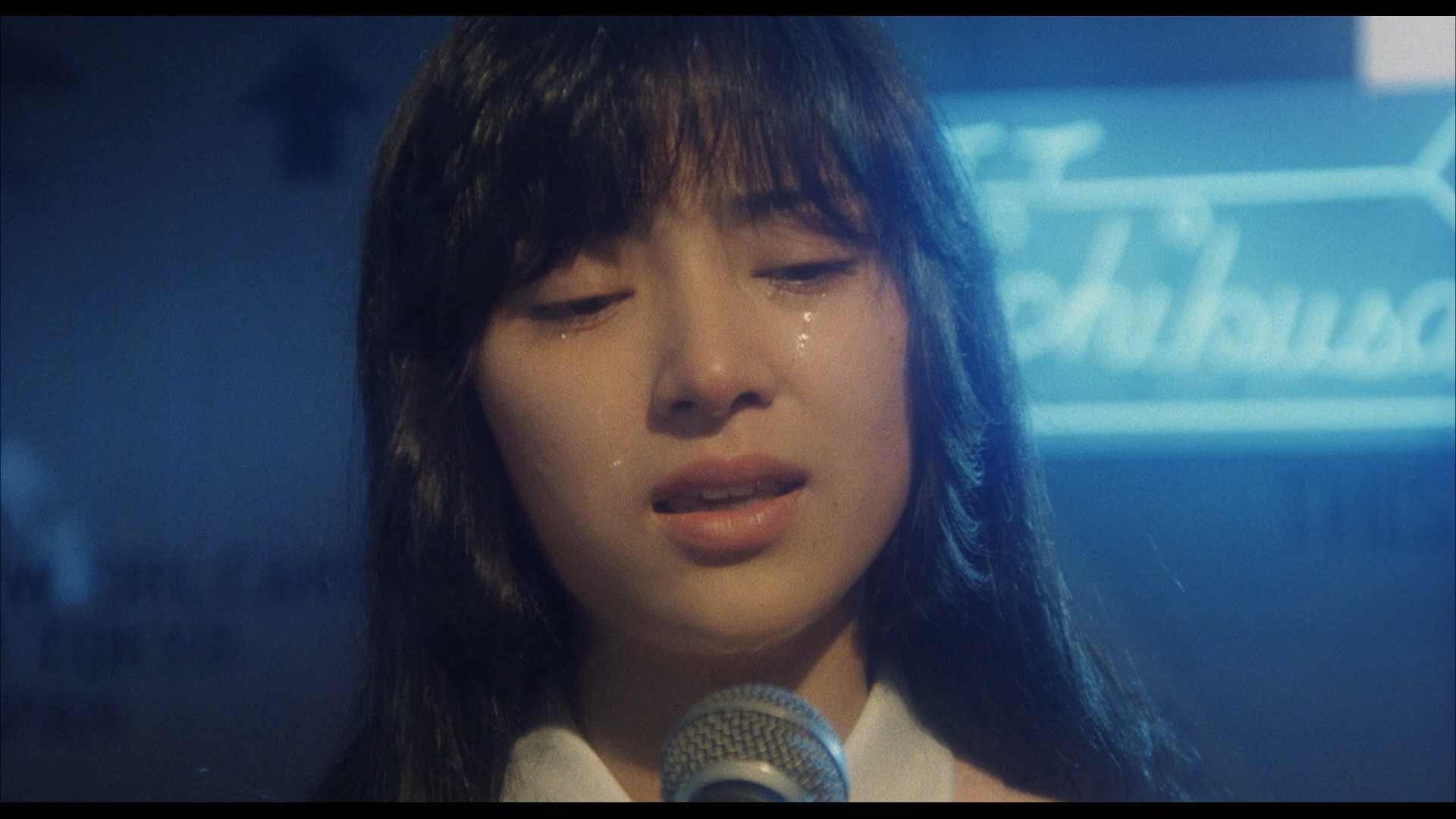 in everything from anti-war dramas to TV commercials to tender dramas. More or less in that last category is one of his most locally beloved films, His Motorbike, Her Island, which fuses his affinity with youth-oriented storylines with the romantic bike culture that flourished throughout the country. His flamboyant visual style is still present here as well, this time with a dreamlike combination of nonlinear color and A Man and a Woman-style monochrome giving the seemingly simple love story at its core some extra emotional heft. It's also a wistful alternative to the usual biker gang stories like the almost contemporary manga Bomber Bikers of Shonan and its offspring.
in everything from anti-war dramas to TV commercials to tender dramas. More or less in that last category is one of his most locally beloved films, His Motorbike, Her Island, which fuses his affinity with youth-oriented storylines with the romantic bike culture that flourished throughout the country. His flamboyant visual style is still present here as well, this time with a dreamlike combination of nonlinear color and A Man and a Woman-style monochrome giving the seemingly simple love story at its core some extra emotional heft. It's also a wistful alternative to the usual biker gang stories like the almost contemporary manga Bomber Bikers of Shonan and its offspring.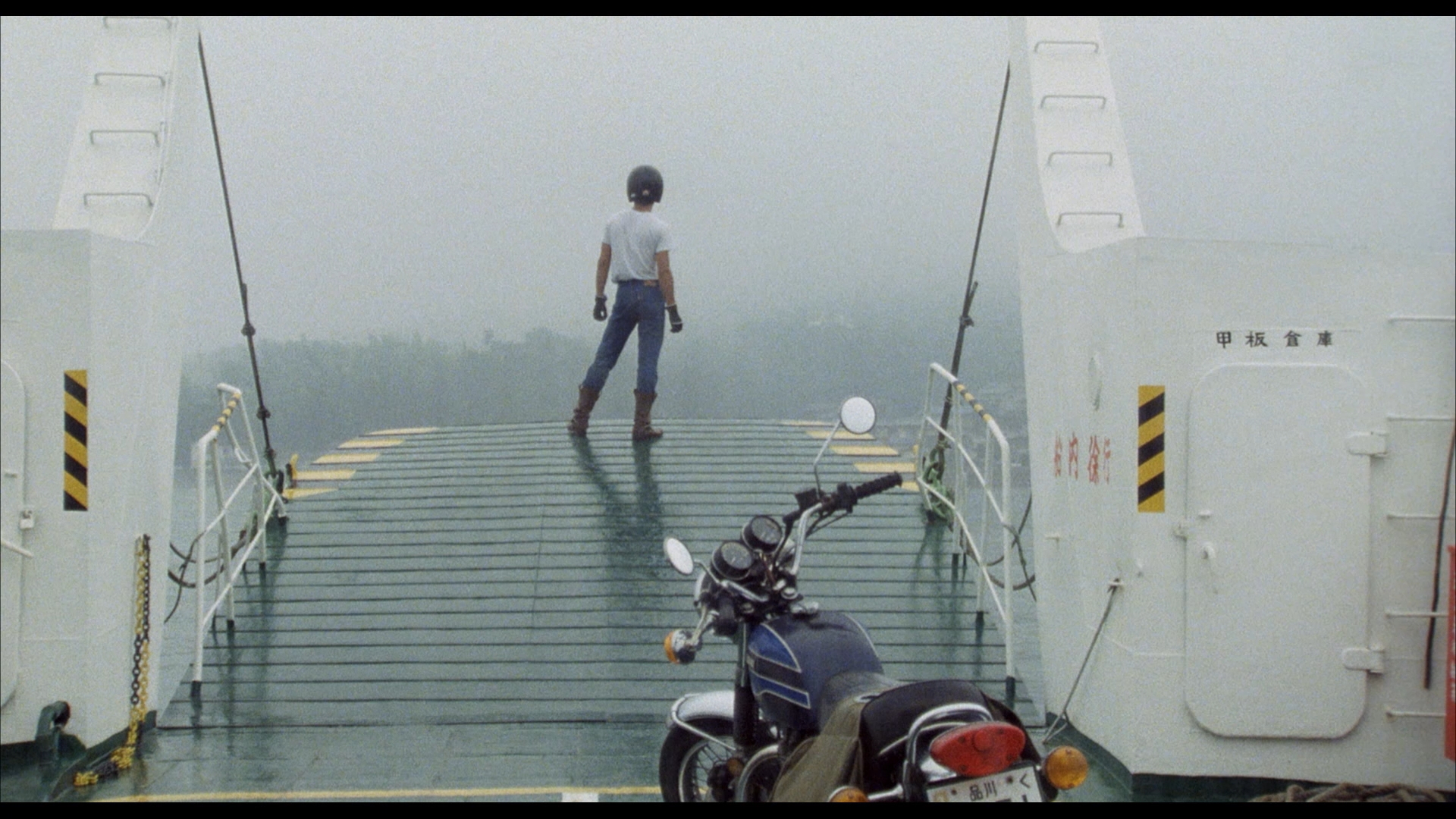 bit of time on the island where she lives, often doused in rain, and a romance begins while
bit of time on the island where she lives, often doused in rain, and a romance begins while 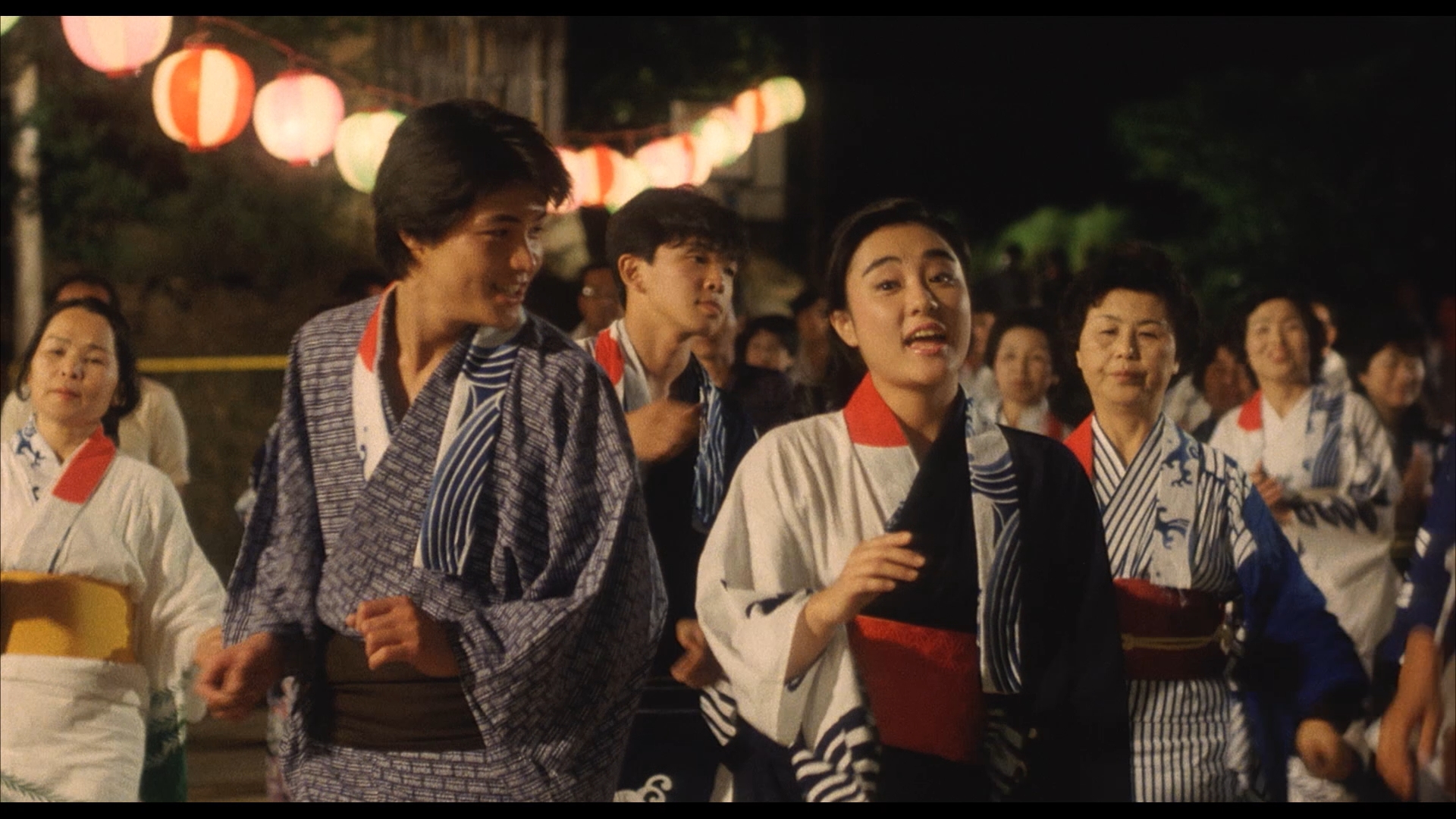 the lives around them also evolve. However, as a year passes between the Obon Festival on the island, fears mount between them about the dangers of their motorbike riding and their fidelity to each other.
the lives around them also evolve. However, as a year passes between the Obon Festival on the island, fears mount between them about the dangers of their motorbike riding and their fidelity to each other.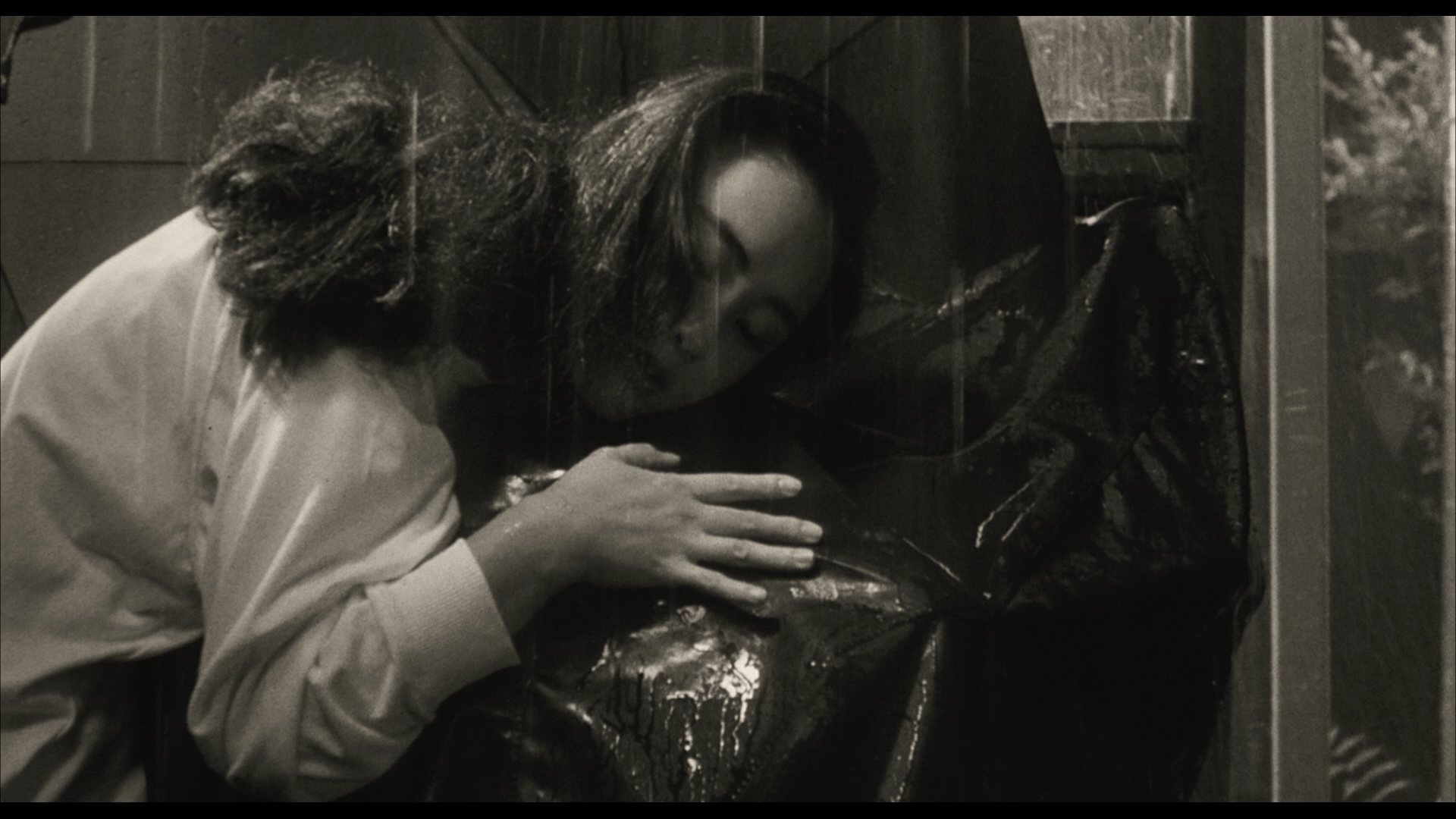 2.0 mono Japanese tracks with optional improved English subtitles, both of which sound good and comparable to the PCM on the earlier release. This time Samm Deighan does the audio commentary honors and proves to be an expert
2.0 mono Japanese tracks with optional improved English subtitles, both of which sound good and comparable to the PCM on the earlier release. This time Samm Deighan does the audio commentary honors and proves to be an expert 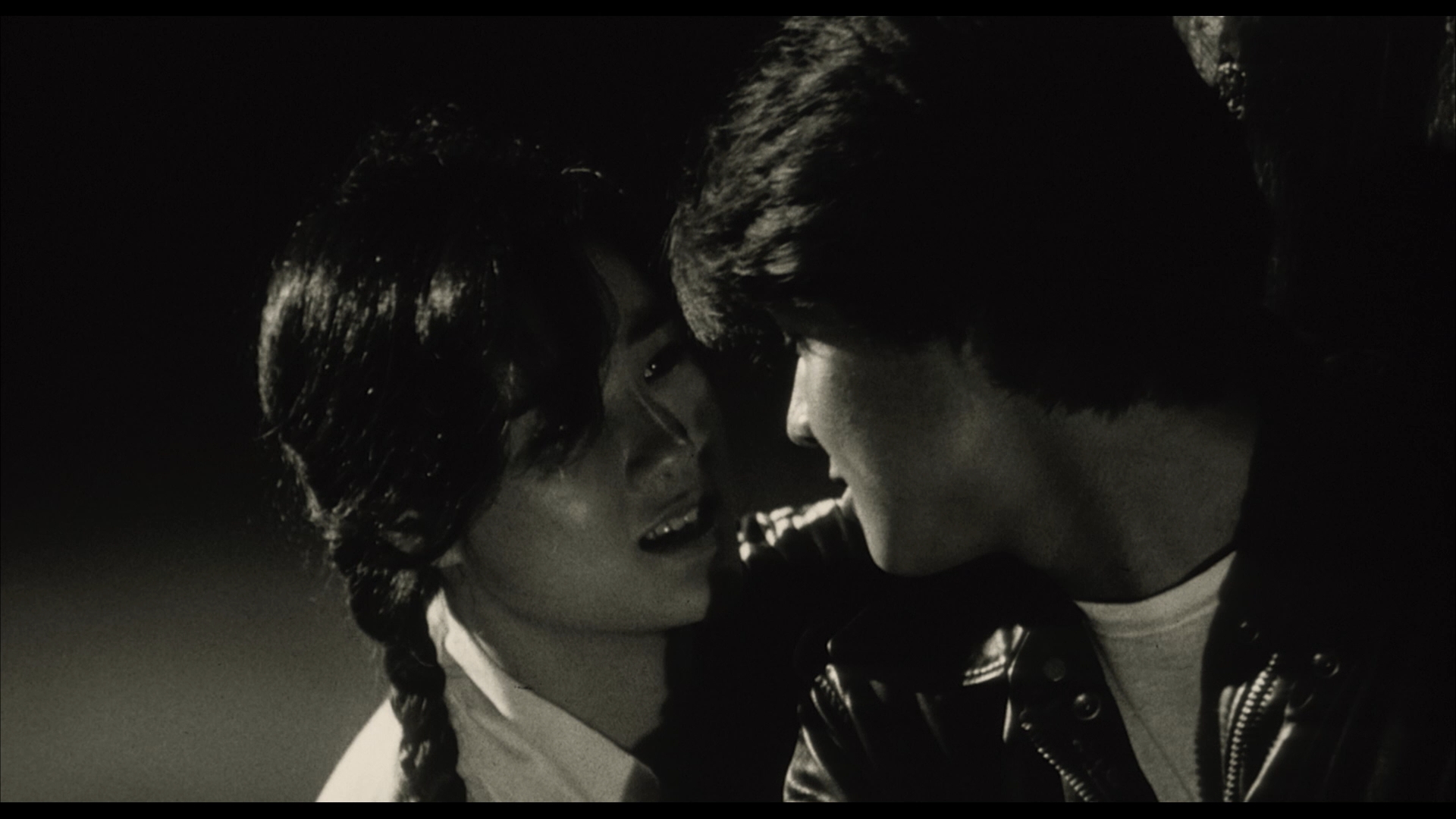 guide through the film as she surveys Obayashi's career (with some choice recommendations along the way), the shifts in Japanese cinema around this time including the rise of V-cinema, the trends of biker and girl gang movies before this, and the backgrounds of the major players. The visual essay "Becoming the Wind: His Motorbike, Her Island and the Biker Movie" (25m11s) by Esther Rosenfield looks at the quirks of biker culture including cinematic touchstones both from Japan (Godspeed You! Black Emperor) and abroad (Scorpio Rising) and all of the political and sexual implications that come with it. Then a second visual essay, "Her Island: Onomichi Pt. 1" (21m18s) by Alex Pratt, studies the importance of the coastal locale, the various participants' connections to Kadokawa, the role of the sea in the emotional undercurrents of the story, and the poetic views of Obayashi himself for the town. The archival Obayashi interview (15m44s) is here as well, covering his refusal to rank his work and disdain for separating "A" and "B" movies, his creative process, literary affinities in the story, and the casting decisions he made for his leads. Also included are the trailer and bonus trailers for School in the Crosshairs, The Girl Who Leapt Through Time, and The Island Closest to Heaven. The first pressing also comes with a 24-page Japanese promo booklet reproduction, and direct purchases also have a theatrical poster postcard and reversible slipcase art by Sam Smith.
guide through the film as she surveys Obayashi's career (with some choice recommendations along the way), the shifts in Japanese cinema around this time including the rise of V-cinema, the trends of biker and girl gang movies before this, and the backgrounds of the major players. The visual essay "Becoming the Wind: His Motorbike, Her Island and the Biker Movie" (25m11s) by Esther Rosenfield looks at the quirks of biker culture including cinematic touchstones both from Japan (Godspeed You! Black Emperor) and abroad (Scorpio Rising) and all of the political and sexual implications that come with it. Then a second visual essay, "Her Island: Onomichi Pt. 1" (21m18s) by Alex Pratt, studies the importance of the coastal locale, the various participants' connections to Kadokawa, the role of the sea in the emotional undercurrents of the story, and the poetic views of Obayashi himself for the town. The archival Obayashi interview (15m44s) is here as well, covering his refusal to rank his work and disdain for separating "A" and "B" movies, his creative process, literary affinities in the story, and the casting decisions he made for his leads. Also included are the trailer and bonus trailers for School in the Crosshairs, The Girl Who Leapt Through Time, and The Island Closest to Heaven. The first pressing also comes with a 24-page Japanese promo booklet reproduction, and direct purchases also have a theatrical poster postcard and reversible slipcase art by Sam Smith.![]()